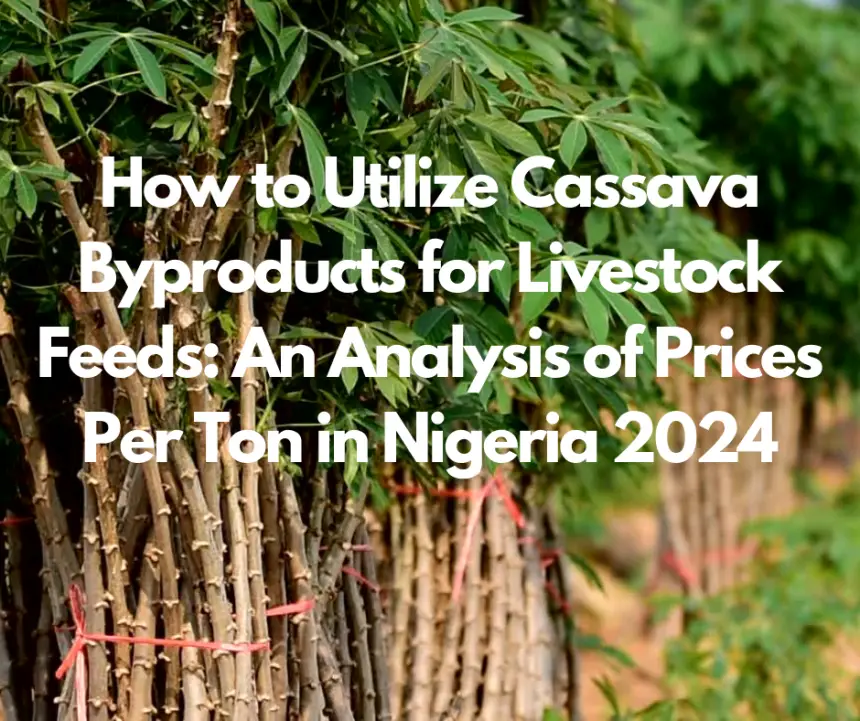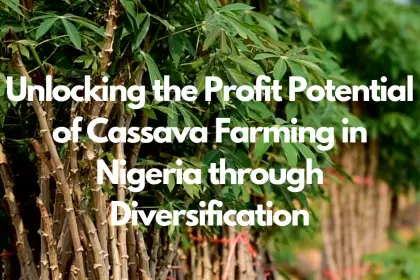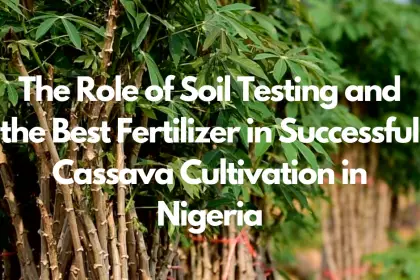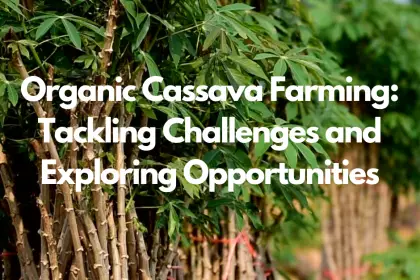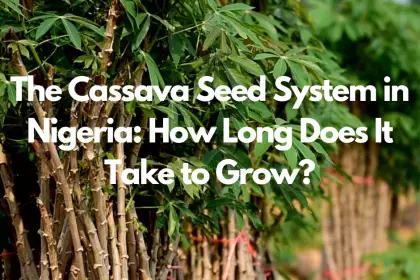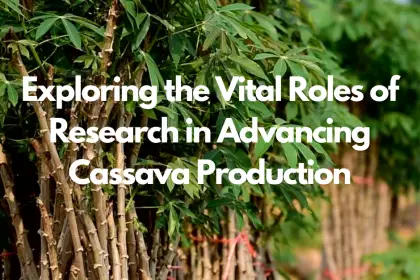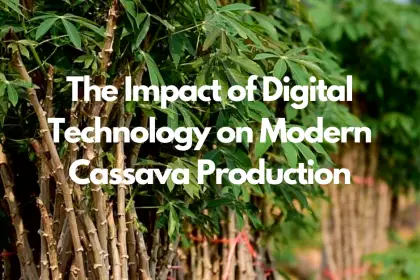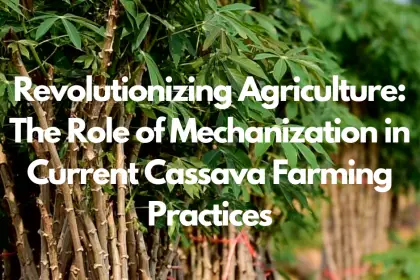Cassava stands as a crucial agricultural asset in tropical regions, notably within sub-Saharan Africa, where its cultivation spans vast areas to meet both dietary needs and industrial demands. The significance of this crop extends beyond its role as a staple food, serving as a key resource in the production of livestock feeds. With the price of cassava per ton in Nigeria 2022 drawing attention, an analysis presents an opportunity to explore innovative approaches to leveraging cassava byproducts in animal husbandry, potentially transforming economic and sustainable farming practices.
This article delves into the price of cassava per ton in Nigeria 2022 and examines the pivotal role cassava byproducts play in livestock feeding. It aims to dissect the environmental advantages, innovative processing techniques, and the economic implications accompanying the utilization of these byproducts. Through exploring challenges and envisioning future prospects, the text seeks to guide stakeholders on how to find sustainable and cost-effective solutions within the cassava cultivation landscape, offering a comprehensive overview relevant to producers, economists, and environmentalists alike.
The Importance of Cassava Byproducts in Livestock Feeding
Utilizing cassava byproducts for livestock feeding not only offers a sustainable solution to managing agricultural waste but also significantly impacts the cost-effectiveness and nutritional quality of animal feed. The transformation of cassava peels into High-Quality Cassava Peel (HQCP) mash has been a game-changer in this regard. Below are some key points highlighting the importance of cassava byproducts in livestock feeding:
- Feed Conversion Efficiency and Cost Reduction:
- HQCP mash has proven to improve feed conversion efficiency in broilers, layers, and growing pigs.
- It can replace significant portions of maize in animal feed, such as 20% for broilers, 35% for layers, and up to 75% for pigs, leading to substantial feed cost reductions for local farmers.
- Nutritional Value and Environmental Benefits:
- Cassava peels, when processed into HQCP mash, offer an energy-rich feed ingredient with nutritional value close to maize.
- This not only lowers the demand for maize in animal feed, freeing up more grain for human consumption but also reduces environmental pollution and minimizes post-harvest losses.
- Innovative Practices and Scalability:
- Traditional methods of sun-drying cassava peels have evolved into more efficient processing techniques, making HQCP mash a viable industry in Nigeria and beyond.
- With 15 million tonnes of wet cassava peels generated annually in Nigeria alone, the potential for scaling this practice to meet the animal feed energy demand in other countries is significant.
Environmental Benefits of Utilizing Cassava Byproducts
Transforming cassava peels into nutritious animal feed significantly mitigates environmental pollution by curtailing post-harvest losses and the prevalent practice of burning cassava peels. This process directly addresses the issue of releasing methane, acrid smoke, and pollutants into nearby water sources, which are common outcomes of leaving cassava peel heaps to rot or setting them on fire. Furthermore, the conversion of cassava waste into safe livestock feed presents a viable solution to the persistent animal feed scarcity crisis, potentially easing pastoralist-farmers conflicts over natural resources and the burden of high costs associated with compound feeds in Nigeria and other cassava-producing regions in Africa.
Key Environmental Benefits:
- Reduced Environmental Pollution: By processing cassava byproducts into animal feed, the harmful practice of burning peels, which contributes to air and water pollution, is significantly reduced.
- soil Nutrient Restoration and Reduced Erosion: The application of cassava leaves and stems back to the soil aids in maintaining soil fertility and moisture, while good agronomic practices, such as intercropping and reduced tillage, can diminish soil erosion by 50-90%.
- Carbon Sequestration and Water Use Efficiency: Cassava plants have the capability to sequester carbon dioxide, aiding in carbon storage and climate change mitigation. Additionally, cassava’s relative efficiency in water use, compared to other crops, underscores its potential in reducing the need for irrigation, thus conserving water resources.
These practices not only contribute to environmental sustainability but also pave the way for innovative approaches in cassava processing technologies. By integrating proper waste treatment and utilizing cassava byproducts for feedstuffs or biotechnological processes, significant strides can be made in alleviating environmental issues associated with cassava production.
Innovative Processing Techniques for Cassava Byproducts
Innovative processing techniques for cassava byproducts have significantly advanced, thanks to collaborations between the International Livestock Research Institute (ILRI) and the International Institute for Tropical Agriculture (IITA). These methods focus on transforming wet cassava peels into High Quality Cassava Peel (HQCP) mash, a product with substantial implications for the livestock feed industry. The process involves grating, drying, and dehydrating the peels, resulting in a product with a low moisture content of about 10-12%, which can be stored for up to six months. This method addresses the challenges posed by traditional sun-drying techniques, which are less effective in humid tropical climates and can lead to aflatoxin contamination.
Key Steps in Processing Cassava Byproducts:
- Grating: Wet cassava peels are grated to increase the surface area for faster drying.
- Drying and Dehydrating: The grated peels undergo a drying and dehydration process, significantly reducing the moisture content.
- Packaging: The resulting HQCP mash is then packed, ready for storage or immediate use in livestock feeds.
This innovative approach not only enhances the quality of cassava byproducts but also mitigates the risks associated with traditional drying methods, such as cyanide and aflatoxin contamination. The processed peels, now in high demand from the feed industry, offer a sustainable solution to feed scarcity. The technology developed by CGIAR scientists, which reduces drying time from days to hours, exemplifies the potential for scaling these practices, promising to replace a significant portion of imported maize in Nigeria’s poultry and fish sectors.
Economic Implications and Cost-effectiveness
The transformation of cassava byproducts into livestock feed has ushered in significant economic implications and cost-effectiveness, especially within Nigeria’s agricultural and livestock industries. This section delves into the economic benefits derived from utilizing cassava byproducts, with a focus on price implications and the potential for scaling this industry.
- Cost Reduction and Feed Availability:
- The innovative processing of cassava peels into High Quality Cassava Peel (HQCP) mash has the potential to replace approximately 810,000 tons of imported maize in Nigeria’s poultry and fish sectors. This substitution could significantly lower feed costs, save cereals for human consumption, and reduce the import bill.
- If scaled, this innovation could transform 3.6 million tons of wet peels into 1.2 million tons of feed ingredients, increasing feed availability and creating new business opportunities.
- Economic Development through Favorable Policies:
- Adopting favorable agricultural policies similar to those in Thailand, focusing on export-led industrialization and trade liberalization, can enhance cassava production, processing, and export in Nigeria. This approach can contribute to food security, economic development, and the creation of a conducive environment for large agribusinesses, including cassava processors and commodity exporters.
- Global Comparison and Potential:
- Comparatively, Mexico, with over 450,000 ha of land suitable for cassava production, could satisfy its animal feed energy demand if the maximum cassava crop yield were achieved. Similarly, Ghana faces high feed costs due to expensive maize, suggesting a vast untapped potential for cassava byproducts in these regions as well.
This analysis underscores the economic benefits and cost-effectiveness of utilizing cassava byproducts for livestock feed, highlighting the potential for scale and the necessity of supportive policies to fully realize these advantages.
Challenges and Limitations
Despite the benefits of utilizing cassava byproducts in livestock feeds, several challenges and limitations need addressing:
- Supply Chain and Handling Difficulties
- Developing viable intermediaries in the cassava value chain is crucial for ensuring a consistent supply of both raw and processed materials.
- The high moisture content of cassava tubers complicates handling, transportation, and storage, necessitating innovative solutions.
- Nutritional Limitations and Toxicity Concerns
- The inherent low protein, vitamin, and mineral content of cassava limits its nutritional value as animal feed.
- High levels of cyanogenic glycosides pose health risks to livestock, releasing toxic hydrocyanic acid upon consumption.
- Ensiled cassava’s high water content may inhibit sufficient daily energy intake, especially in non-ruminants, due to its extremely low and poor-quality protein content.
- Supplementation and Anti-Nutritional Factors
- Dietary supplementation with proteins, vitamins, and minerals is essential to counteract cassava’s nutritional deficiencies.
- The cyanide levels in cassava, ranging from 75 to 1,000 mg/kg, necessitate careful processing to remove these toxins effectively.
- Addressing cassava’s anti-nutritional factors, including cyanogenic potential and phytate content, requires further research to enhance its safety and efficacy as livestock feed.
Future Prospects and Research Directions
Annually, the world sees the production of approximately 178 million tonnes of cassava, with Nigeria standing as the forefront producer. The country contributes about 59 million tonnes, which accounts for 20% of the global cassava production. This massive production results in around 15 million tonnes of wet peels, highlighting the significance of Nigeria in the global cassava market.
- Global Cassava Production:
- Total Annual Production: 178 million tonnes
- Nigeria’s Contribution: 59 million tonnes (20% of global production)
- Resultant Wet Peels: 15 million tonnes
This data underscores the pivotal role Nigeria plays in the cassava industry, not just in terms of raw cassava production but also in generating substantial byproducts such as wet peels. The volume of wet peels produced annually opens avenues for research into more efficient processing and utilization methods, aiming to transform this byproduct into a valuable resource. The focus on Nigeria, given its significant contribution to global cassava production, is essential for developing scalable and sustainable solutions that can be adapted by other cassava-producing nations.
Conclusion
Through comprehensive analysis, this article has highlighted the transformative potential of cassava byproducts in the domain of livestock feeds, focusing on the myriad of benefits ranging from environmental sustainability to economic viability, particularly in the context of Nigeria’s agricultural landscape. The synthesis of data underscores the pivotal role that cassava byproducts play in enhancing the nutritional value of livestock feeds while simultaneously offering a sustainable solution to manage agricultural waste. The innovative processing techniques and the subsequent economic implications posit a promising frontier for cassava as a staple in livestock nutrition, marking a significant stride towards cost-effectiveness and sustainable agricultural practices.
Looking ahead, the journey of integrating cassava byproducts into the fabric of livestock feeding practices demands a concerted effort in overcoming existing challenges, such as supply chain inefficiencies and nutritional limitations. The roadmap laid out in this discourse invites further research and policy reform, aiming to harness the full potential of this resource. As Nigeria continues to lead in global cassava production, the insights garnered here serve not only as a blueprint for domestic advancement but also as a beacon for other cassava-producing regions. The culmination of these efforts stands to redefine the linkage between agriculture and livestock feeding, heralding a new era of economic development and environmental stewardship.
FAQs
Q: What methods are used to feed animals with cassava?
A: Cassava is commonly used for animal feed by providing livestock with fresh or sun-dried cassava roots and its by-products, especially in traditional settings near cassava processing areas. Pigs are typically fed peeled cassava roots, while cattle are more often given unpeeled roots.
Q: What is the process for converting cassava peels into livestock feed?
A: To convert cassava peels into livestock feed, the peels are first grated multiple times to create smaller particles. These particles are then packed into sacks and placed into a hydraulic press to remove excess water. The resulting wet cake is left inside the sacks to ferment overnight, which helps to break down hydrocyanic compounds, making it safer for animal consumption.
Q: What is the average cassava yield per hectare in Nigeria?
A: In Nigeria, the average yield of cassava can reach up to 40 tonnes per hectare (approximately 16.2 tons per acre) when using the TME 419 variety of cassava. However, typical yields are recorded between 10-15 tonnes per hectare (4-6 tons per acre), which is relatively low compared to countries like Thailand.
Q: What is Nigeria’s annual cassava production?
A: Nigeria is a leading cassava producer, contributing about 26% of the world’s cassava output. In 2021, Nigeria produced over 63 million tons of cassava.

